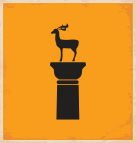
Wetlands

The types of wetlands encountered on Rhodes are the following: river mouths, streams, artificial lakes, dams and marshes. They officially number thirty four in total on the island, following research and recording by WWF Greece during the implementation of the program ‘Recording and Protection of the Insular Wetlands of Greece’. However, another seven have been found and studied.
The areas officially characterised as wetlands include Nanon Lake, Apolakkia artificial lake, Gadouras River, Argiros river, Asclepius creek, Skolona lake, Lachania river mouth, Katavia marsh and Plimmiri marsh.
The wetlands of Rhodes are an important habitat of tremendous significance for the survival and reproduction of migratory birds, serving as intermediate stops on the birds’ journey. These habitats are also home to birds of prey, as some depend directly on the existence of these wetlands for their sustenance during winter.
In recent years, the environmental group ‘Aithria’ have been systematically recording the aviculture in the island’s wetlands. Some of the species recorded are the following: Ergetta garzetta, Ardeola raltoides, Ardea cinerea. Ardea purpurea, Nycticorax nycticorax. Himantopus himantopus, Charadrius dubius, Motacitta alba, Apus apus, Apus melba, Swallows, Emberiza caesia, Carduetis Cannabina, Galarida cristata, Merops apiaster, Larus argentatus, Fulica atra Anas penelope, as well as birds of prey, such as Buteo rufinus, Falco tinnuncutus and Hieraaetus fasciatus. Other unique species include the small black gastropod Melanopsis Praemorsa, the crab Potamon Potamios, the shrimp Pataemonetes Antennarius, the eel Anguilla Anguilla, the frog Rana Ridibunda and the turtle Mauremys Caspica.











